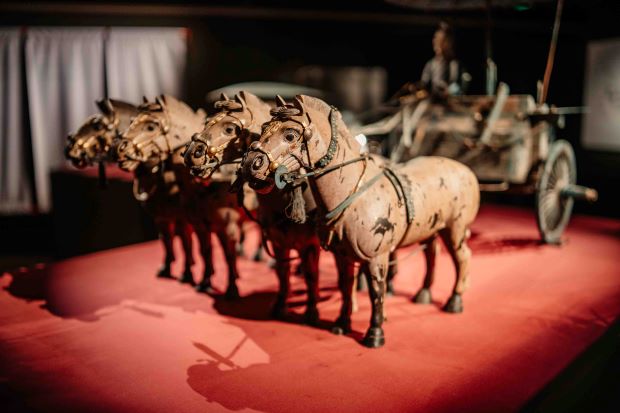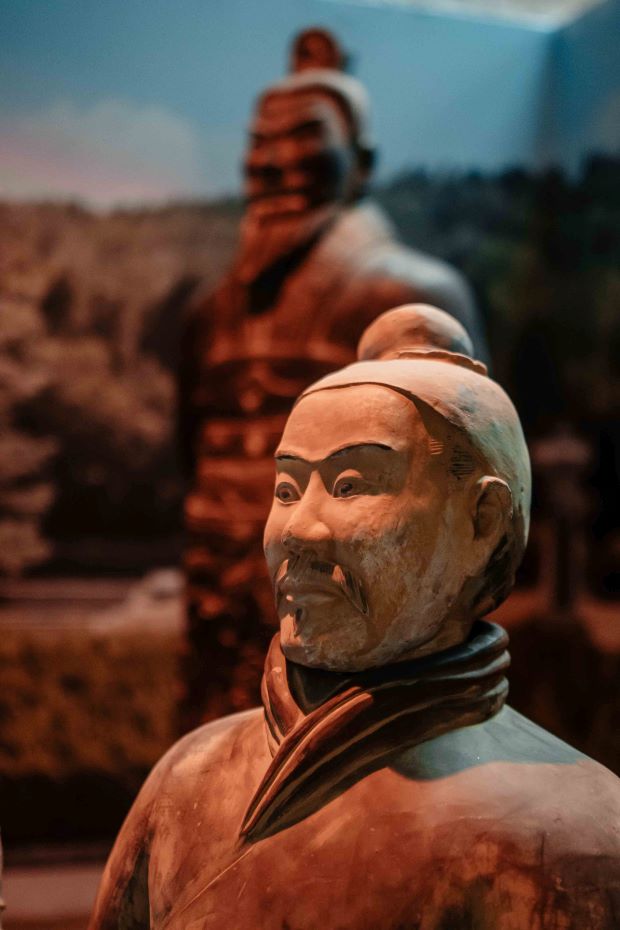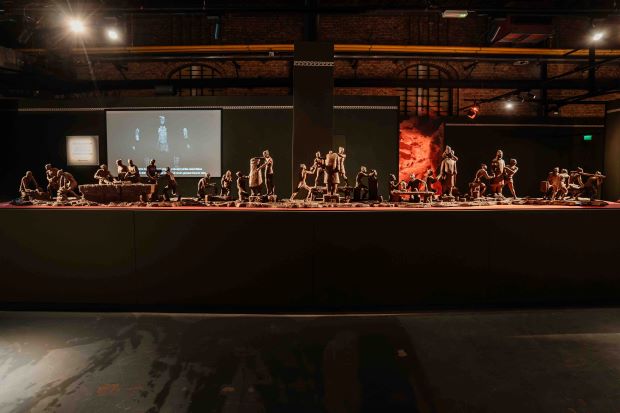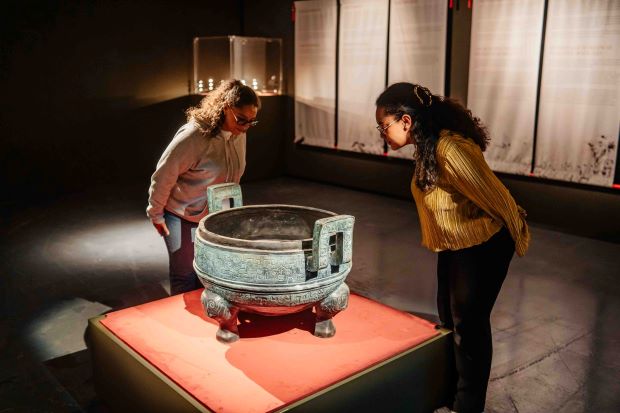- Daily & Weekly newsletters
- Buy & download The Bulletin
- Comment on our articles
Terracotta Army: Exhibition at Tour & Taxis uncovers a whole new world
In 1974, Chinese farmer Yang Zhifa accidentally discovered the first of more than 8,000 terracotta statues belonging to the First Emperor of China’s Terracotta Army.
This find, outside Xiyang village in central Shaanxi province, shook up not only his life but the whole archaeological world, as it revealed a priceless cultural heritage.
Now you can experience some of the magic felt by Zhifa in the exhibition The Terracotta Army and the First Emperor of China at Tour & Taxis in Brussels. The immersive journey to ancient China over 2,200 years ago is set to atmospheric and authentic Chinese music.

In a 1,800m² space, the show covers the history of the First Emperor, his original army, military conquests, empire, the process of creating the soldiers of the Terracotta Army, the Emperor’s tomb and the history of archaeological excavations.
Drawing crowds in Naples in 2017 and Milan in 2019 before reaching the Belgian capital, it is billed as “the most comprehensive exhibition” ever created on the army, necropolis, and life of the First Emperor of China. His name, Qin Shihuangdi (259-210 BC), literally means ‘first Emperor’. The dynasty only lasted about 15 years, from 221–206 BC, but it greatly influenced the next 2,000 years of Chinese history.
“It is thought that China’s name comes from the name of the Qin dynasty,” says Benoît Mater, author of a book on the subject. He adds that the Emperor was “obsessed with mortality and death”. Indeed, the statues of soldiers, chariots, weapons and horses – even a green copper duck – were buried in the Necropolis to protect Emperor Qin in the afterlife.

In nine cavernous, dark rooms, the exhibition provides “a new perspective on the art, culture and history of Imperial China”. Mater told the Bulletin its aim is “to show the history of the first big Kingdom of the world,” and in doing so reveal insights including that Qin’s army was one of defence, not of conquest.
The 300-plus items on show, from tiny arrowheads to gargantuan cauldrons, are, weapons aside, all reconstructions. Brilliantly created by around 720,000 artisans from Xi’an province near the excavations, over some 36 years, they offer a glimpse into the daily military and imperial life of Qin’s reign.
Each warrior bears a different facial expression, mood and ‘state of alertness’. Says Mater: “Every statue has a specific trait. Their hair is different, as the hair styles of each fighter are important to show to which rank he belongs.”
The figures, made in eight separate parts, are also very heavy. They weigh in at some 150-200kg for each clay soldier and around 800kg for the brass horses.

The show’s crowning glory is a spellbinding installation of around 170 army warriors, from their special hairstyles down to their military boots. The accompanying sound and light show heightens the atmosphere of the buried army of people who appear to stare at visitors from the imagined Pit No 1 in this Chinese ‘city of the dead’.
It was in Pit 1 that the majority – some 6,000 – of the figures were discovered. A second pit contained mobile forces, and the third, much smaller (520m²), was for high-ranking units. And it was not just soldiers, infantry or cavalry, there were also acrobats, “to entertain the warriors,” Mater explains.
In addition to guided tours and special group visits, the exhibition is further enhanced by installations, tri-lingual audio commentary, information panels, a downloadable audio guide and an interactive zone. There are also videos – notably an interview with Xhifa himself, who on 29 March 1974 discovered the treasures by accident, while digging a well.

Xhifa shares his emotions and significant moments of what is now considered the greatest archaeological find of the 20th century, which was added in 1987 to Unesco’s World Heritage List. One archaeologist working on the site said he was so excited, that “when we cycled back to the site, we went so fast that we felt we were flying.”
The Terracotta Army and the First Emperor of China
Until 31 December
Shed 4bis, Tour & Taxis
86C Avenue du Port
Brussels
Photos: Terracotta Army ©Tempora Victor Pierrot



















